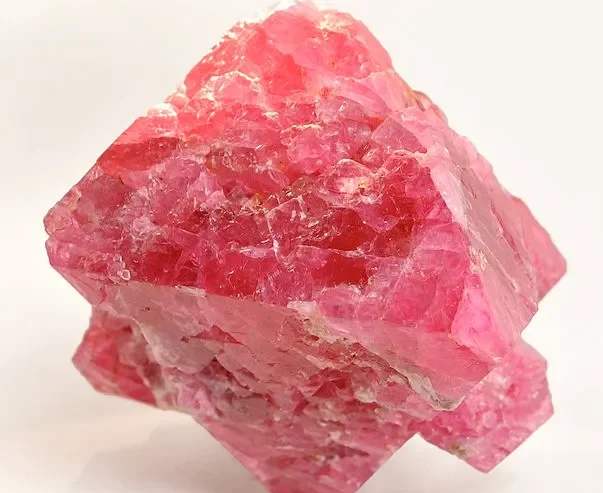
Appearance
The variety of colors that spinel comes in, including red, pink, orange, blue, purple, and even black, is one of its distinguishing qualities. The presence of trace elements in the crystal lattice is the cause of this color variation. Red is the most well-known color for spinel, and it frequently reflects the red tones of ruby.
The cubic crystal structure of spinel is more precisely an octahedral crystal system. An oxygen atom is present in each corner of the cubic unit cell, while the atoms of magnesium and aluminum alternate between the octahedral locations inside the unit cell. This configuration results in well-formed octahedral crystals and gives spinel its distinctive octahedral crystal habit.
Geographical Distribution
Around the world, spinel can be found in a variety of places. Myanmar (Burma), Sri Lanka, Tajikistan, Vietnam, Madagascar, Tanzania, and Afghanistan are a few of the notable sources.
History
Spinel-rubies or balas rubies were the names given to the clear red spinels. Before the advent of modern science, rubies and spinels were interchangeably referred to as rubies. The term spinel replaced “ruby” after the 18th century, when the term was limited to the red gem variation of the mineral corundum.
Chemical Composition
Magnesium aluminum oxide makes up spinel’s chemical composition (MgAl2O4). It is composed of magnesium oxide (MgO) and aluminum oxide (Al2O3) in equal amounts. Spinel may also include trace amounts of other elements, which add to its color variations.
Types
The following are a few of the most popular varieties and hues of spinel:
Red Spinel:
The most well-known and historically significant color is probably red spinel. Because of its vivid red color, it is frequently confused for a ruby. The crystal lattice’s traces of chromium are what give it its red color. Due to some well-known red spinels being mistaken for rubies, their historical significance has increased.
Pink Spinel:
Pale to vivid pink hues can be seen in pink spinel. Similar to red spinel, it is likewise caused by chromium, although at lesser quantities. Pink spinels have a delicate and beautiful color that makes them very valuable.
Orange Spinel:
Iron and chromium work together to give spinel its orange hue. From mild apricot tones to deeper, more vivid oranges, orange spinels come in a variety of hues.
Blue Spinel:
Blue spinel is a rare and highly valued form. Cobalt traces found in the crystal structure give it its blue hue. The blue tones can be faint to strong, and they frequently have sapphire-blue undertones.
Purple Spinel:
A combination of iron plus trace metals like zinc and chromium results in purple spinel. It is capable of displaying a variety of purple tones, from delicate lavender to deep violet.

Black Spinel:
The distinct variety of black spinel is distinguished by its intense black hue. It is sometimes rather shiny while being dark, and it can serve as a substitute for other black gemstones such as onyx.
Colorless Spinel:
Colorless spinel has a tiny amount of color and is very translucent. It can replace diamonds in jewelry and is very rare.
Other Colors:
In addition to the colors listed above, spinel can also exist in additional, less common hues like yellow, green, and brown.
Uses
- Jewelry and Ornaments:
Gemstone Jewelry: Since it is durable and has vibrant colors, spinel is a highly prized gemstone. It is frequently utilized in several kinds of jewelry, such as bracelets, necklaces, rings, and earrings. Red, pink, blue, and violet are the most in-demand hues.
Collectible Gemstones: Gem collectors and enthusiasts are drawn to rare and excellent spinels, particularly ones with remarkable color and clarity.
- Industrial Applications:
Abrasive Material: Because of its hardness, spinel can be used as an abrasive in tools for grinding and cutting. It can be applied to production procedures where exact material shape is necessary.
Ceramics: The thermal and chemical stability of spinel makes it a valuable ingredient in the creation of sophisticated ceramics. It is present in ceramic parts used in the electronics and aerospace sectors.
Refractories: Spinel is useful in refractory applications because of its resilience to chemical corrosion and high temperatures. Materials called refractories are used to line kilns, furnaces, and other high-temperature areas.
- Scientific and Technological Uses:
Laser Crystals: Particular types of lasers can be used to host on spinel. The fact that it can emit laser light at different wavelengths has drawn attention in the field of laser technology.
Electronics: The potential use of spinel in electronics has been studied recently; in particular, it has been considered as a material for transparent conductive coatings, which are used in solar cells and displays.
Table





